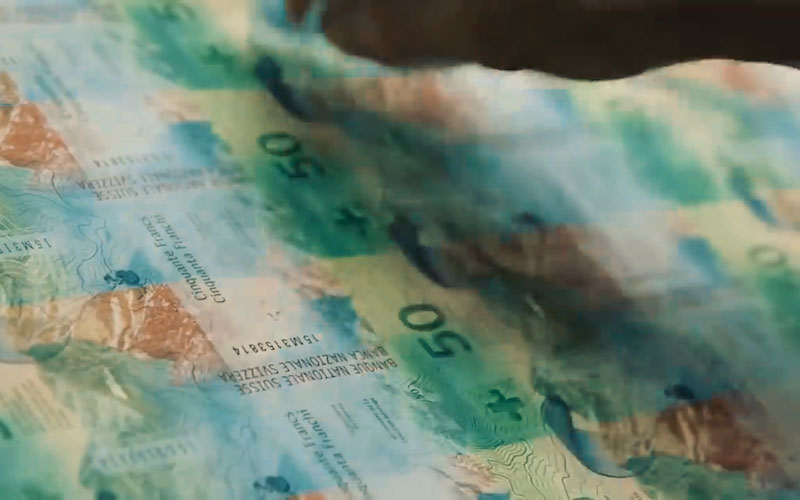Gold prices fluctuated and strengthened on Tuesday, with Goldman Sachs calling for $4,000. Here are the driving factors you need to know.
2025-09-23 16:47:24
In addition to the primary factors, a series of other core factors are driving gold prices. This article briefly summarizes the relevant information influencing gold prices. In the short term, investors will focus on the upcoming speech by the Federal Reserve and Friday's release of key US inflation data, the core PCE price index, to capture new policy signals.

Expectations of a Fed rate cut impact gold prices
Gold's strong rally this year is partly due to market expectations of the Federal Reserve's easing cycle - which was launched last week by Fed policymakers by cutting the benchmark interest rate by 25 basis points and signaling two more rate cuts in 2025.
Federal Reserve Governor Stephen Milan pointed out that the central bank should cut interest rates significantly to reduce risks to the economic outlook. The Fed cut interest rates by 25 basis points last week - the first rate cut since December last year, and released a signal of further easing.
Investors are closely watching a series of speeches from the Federal Reserve this week (including Chairman Jerome Powell's speech early Wednesday morning) for new signals on the central bank's monetary policy path; U.S. core personal consumption expenditure price data released on Friday is also a market focus.
The author specifically points out that since no new employment data was released in the United States during the period of intensive speeches by Federal Reserve officials, they will be more inclined to explain the reasons why their dot plot voted for the Fed to cut interest rates twice more this year. Their explanation may strengthen expectations of a short-term Fed rate cut.
Since gold is priced in US dollars, a weaker dollar helps boost gold prices
The US dollar index, which measures the exchange rate of the US dollar against a basket of currencies, has fallen by about 10% so far this year and is expected to continue to fall.
Partly as a result, inflows into physically-backed gold exchange-traded funds (ETFs) hit a three-year high.
Precious metals sectors fought collectively to boost gold prices
"Silver may still have room to run higher as investors look beyond record high gold prices," said Han Tan, chief market analyst at Nemo.money.
The current gold-silver ratio is about 86, which is still higher than the 5-year average of 82. Therefore, compared with gold, the more popular precious metal "category", silver may still have more room to catch up. Spot silver has hit a high of more than 14 years; platinum and palladium are also rising.
The author points out that the common rise of various precious metals further verifies the logic of their respective rises and increases the market premium of the leading variety gold.
There is still room for trading congestion, and institutional allocation is not high
During the same period, gold far outperformed the S&P 500 and even the leading cryptocurrency, which saw gains of 13% and 20%, respectively.
The Bank of America September fund manager survey released last week showed that gold has jumped to second place on the list of "most crowded trading targets", second only to the stocks of the "Big Seven Technology Giants".
However, when asked about their gold asset allocation, 39% of the fund managers surveyed said their current gold holdings were close to 0%. The weighted average gold allocation among all fund managers surveyed was only 2.3%.
Central bank gold purchases remain aggressive
In a report released on Monday, Societe Generale said that after a typical seasonal decline in UK gold purchases, gold demand from central banks has rebounded to 63 tons, in line with the average level after 2022, a trend that further boosted market bullish sentiment.
"We believe the core driver of gold prices is central banks around the world, particularly in emerging markets, such as Russia, China and India, which are increasing their gold holdings to hedge their currencies against the dollar," said John Stoltzfus, chief investment strategist at Oppenheimer. "And when these central banks do buy gold, they usually do so on a large scale."
Earlier this month, Goldman Sachs analysts noted that the breakout above key levels reflected “continued strengthening of gold purchases by committed buyers” – including increased holdings of gold ETFs, further expansion of speculative positions, and a resurgence of central bank demand for gold after a seasonal lull in summer.
The agency reiterated its price forecast: gold will reach $4,000 per troy ounce by mid-2026.
Geopolitical situation supports gold prices in the long term
Russia's Defense Ministry said its forces have taken control of the Kalinivsk settlement in Ukraine's Dnipropetrovsk Oblast.
"Safe-haven buying continues amidst continued geopolitical uncertainty, including the Russia-Ukraine conflict," said Jim Wyckoff, senior analyst at KitcoMetals.
The technical analysis in the previous article mentioned that if spot gold reaches 3750, the next target will be the measured increase of 3824 in the large triangle pattern of spot gold. Some investors may choose to take profits in advance around 3800.

(Spot gold daily chart, source: Yihuitong)
At 16:41 Beijing time, spot gold was trading at $3769/68 per ounce.
- Risk Warning and Disclaimer
- The market involves risk, and trading may not be suitable for all investors. This article is for reference only and does not constitute personal investment advice, nor does it take into account certain users’ specific investment objectives, financial situation, or other needs. Any investment decisions made based on this information are at your own risk.





















